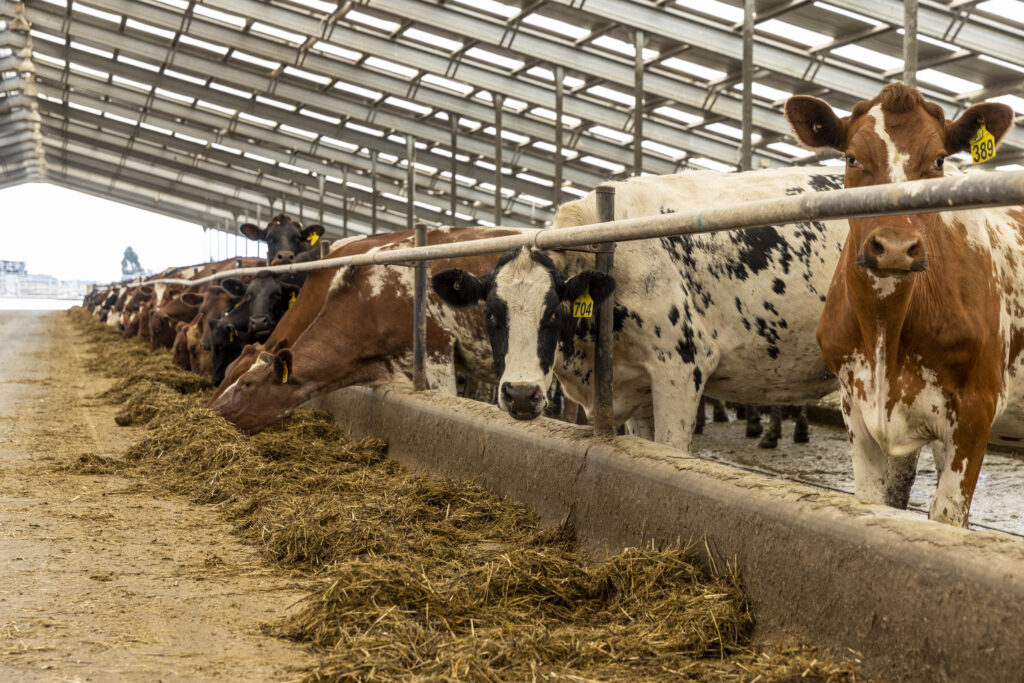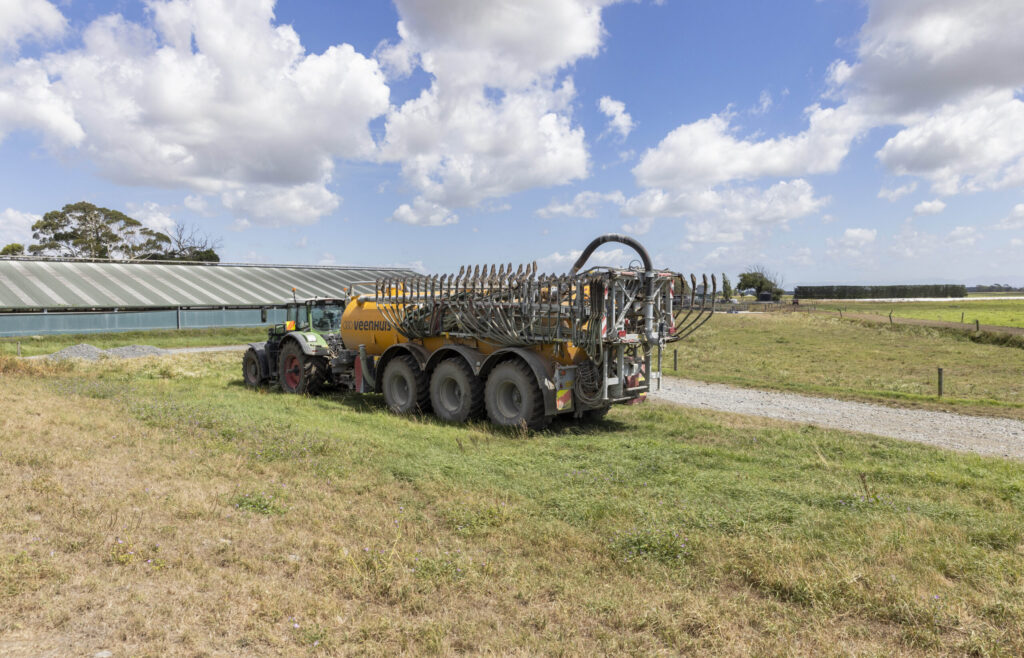This article first appeared in our sister publication, Dairy Farmer.
In his nearly 37 years on Rushbrook Farm, a Canterbury farmer has seen a huge improvement in its pasture and soils – something he puts down to the cows as well as the effective use of effluent.
Now nearly 84, Phil Garrett bought Rushbrook Farm at Leeston, south of Christchurch, near Lake Ellesmere/Te Waihora, in 1986 and has farmed it since then with his son Andrew. It was among the first farms in the district to be converted to dairy farming. Originally 103ha, the property has now grown to 440ha and milks 1000 cows, but with young stock usually carries 1750 cattle.
One of the things that attracted Garrett to the property was the availability of water for irrigation from shallow wells. But the high water table makes the farm prone to becoming very wet – wet enough to make farming very difficult.
“We had to build the dairy in a muddy paddock and it was raining and it was a struggle to get it built,” Garrett said.
They learnt to work around the mud but eventually it became too much.
“We were just sick of it and my son Andrew said one day, ‘We need to build a pad or something’,” he said.

In 2012 they built a large shed, with 897 stalls that can safely hold 1000 cows, or up to 1200 for two or three days if there’s a snowstorm or similar weather event.
“We have had to do that at times and put dry stock in as well to keep them off the pasture.
“We have one herd in at night and they graze outside during the day and the other herd comes in during the day and grazes outside during the night.”
The hybrid shed/pasture system has seen production virtually double through efficient feeding and pasture management. An important part of that is using effluent from the barn and cowshed as “organic fertiliser”. Almost no other fertiliser is used.
“The pastures have improved so much in the last 10 years without any fertiliser, just effluent, it’s absolutely astounding and we haven’t put any new grass in – they’re all old pastures with dandelions and God knows what. They grow like fury.
“We’re on a 10-day grazing round, which will startle a lot of people,” said Garrett, who also said they only feed grass that’s short and sweet, topping if it gets too tall or making silage it gets taller still.
The effluent is collected in a 12 million litre storage pond next to the barn and every year about 32 million litres is spread over the whole property.
“Every 12 hours in the shed is 25,000 litres of potential fertiliser. Sure, there’s a cost of spreading – but against that is less urine patches and more even pasture growth, with no fertiliser purchases.”

Ashburton contractor Matt Lovett spreads the effluent with a tanker that lays the slurry at the base of the plant, and he’s on arm every 10-14 days. The effluent is first agitated by two big stirrers and then a suction pipe fills the 28,000 litre tanker via one of the funnels protruding from side of the pond. It can spread up to a million litres a day.
“We have taught a lot of other people how to use their effluent,” Garrett said.
“When Lovetts first started coming here, they were going to other places where they were told, ‘Dump it all in that paddock there,’ but Matt told them we were spreading it over the whole farm and now he’s doing that on a hell of a lot of farms and they’re saving the fertiliser bill.”
When Garrett bought some adjoining land that had been cropped for 50 years with nothing being put back, he saw the remarkable power of effluent to restore exhausted soils.
“It was in grass when we took it on and we just shut the gate and left it and thought there’d be enough feed there for winter for the cows, but nothing grew for 12 months until we started to water it. It had rain but it just wouldn’t grow, it was just dead, completely robbed, but now with cows being on it and the effluent going on, it’s one of the best blocks on the farm.”
The organic fertiliser is also used on the 85ha of maize grown on the farm every year, along with a small amount of nitrogen added at sowing, the only additional fertiliser used.
“That will be chopped for silage at the end of March. We made about 17t a hectare last year, which is not bad for Canterbury. We’ve had it one paddock for 10 years in a row and it’s getting better.”










